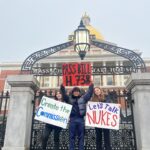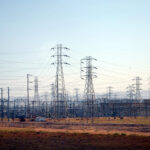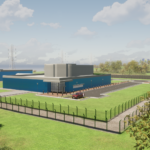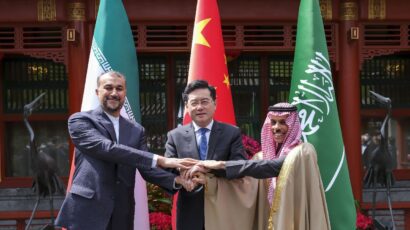The Future of Nuclear Energy: Policy recommendations
By Allison Macfarlane, James Asselstine, John Ahearne | December 11, 2008
Global warming necessitates the development of new forms of low-emissions, base-load power generating capacity. To assess the financial, regulatory, and proliferation concerns confronting nuclear energy and to develop strategies for addressing the barriers to the deployment of new reactors, in late September 2008, the Bulletin of the Atomic Scientists convened nearly 40 scientists, policy makers, industry representatives, and nongovernmental experts from around the world. The meeting was cosponsored by the University of Chicago, Argonne National Laboratory, and the Chicago Council on Science and Technology.
A subset of the meeting’s participants developed the following findings and recommendations based upon the presentations and discussions at the meeting. These findings and recommendations do not represent the views of all of the meeting participants or sponsors. Conference participants who endorse this document are listed at the bottom.
- Finding #1: Recent efforts to license and build new nuclear reactors overseas, in Finland and France in particular, offer lessons for the United States regarding possible construction obstacles and cost and schedule overruns.
Recommendation #1: The Nuclear Regulatory Commission (NRC) is currently working closely with France and Finland to ensure that the insights from the construction of a new reactor in Finland are integrated into future U.S. regulatory activities. In addition to this effort, the NRC and the Energy Department should jointly commission a detailed study on lessons learned from recent worldwide efforts to build new nuclear reactors, incorporate the commission’s recommendations, and hold forums to discuss these issues with nuclear industry officials and other stakeholders.
- Finding #2: An effective NRC is needed to ensure the safe operation of existing U.S. plants and the safe development of a new generation of U.S. plants. The NRC has good regulations to ensure the safe construction and operation of light water nuclear power plants, and its regulatory system is more open than that of other countries. Nonetheless, robust oversight is critical to the safe operation of the existing fleet and requires a strong safety culture and analytical tools. This is all the more true in light of efforts to extend the operational life of some reactors from 40 to 60 years and to increase the power output from others.
Recommendation #2: The NRC should vigilantly and proactively enforce its current regulations and encourage a strong safety culture to reduce the risk of significant operating events that can lead to extensive plant shutdowns. The Energy Department, in collaboration with the NRC, should also create a new research and development program in nuclear engineering to provide the advanced tools needed to analyze the safety of reactor designs, fuels, siting options, etc. This would allow the NRC to independently analyze new reactor designs with the expectation that such an approach can lead to transparently safer and less costly projects.
- Finding #3: Potential bottlenecks in constructing a nuclear plant include: a) shortages of skilled trades people for plant construction and skilled personnel to design and operate plants safely and efficiently; and b) a relatively limited manufacturing base, especially for large reactor components such as heavy forgings.
Recommendation #3: As part of this effort, to address labor force needs, the federal government should fund university nuclear engineering programs through the Energy Department; grants should include direct funding to support research at both the undergraduate and graduate level.
- Finding #4: Once U.S. utilities build a few nuclear plants, they will better understand the costs and construction times for future plants, and the market may be more favorable to building additional plants. To build the first several plants (approximately 7 to 8 reactors), industry may need more loan guarantees from the U.S. government than the roughly $18 billion that is authorized in the Energy Policy Act of 2005.
Recommendation #4: The new administration should encourage public investments in low carbon-emitting electric generation alternatives, including new nuclear power plants.
- Finding #5: From an international perspective, two issues need to be addressed: First, progress must be made toward resolving the nuclear waste problem both by individual countries and through regional compacts. Second, the spread of nuclear power to non-nuclear weapon states will increase the likelihood of nuclear weapons proliferation from both state and non-state actors, unless governments remain vigilant and provide increased support to the International Atomic Energy Agency (IAEA).
Recommendation #5: The Energy Department should fund projects that find creative solutions via regional partnerships to the nuclear waste created from reactor operation; these grants should include representatives from the countries under discussion. The United States should provide adequate funding to the IAEA to carry out necessary nonproliferation work on a growing industry. Importantly, the nuclear industry should strive to reduce the proliferation potential of its reactors and fuel-cycle facilities and regularly revisit this risk.
- Finding #6: The safe operation of power reactors requires international safety standards that should be implemented by a suitable international institution. That institution should work to promote and ensure safe plant design and operations and develop mechanisms that could assist member countries in enforcing those standards.
Recommendation #6: The United States and other nations with an interest in expanding nuclear energy should increase their funding of the IAEA and enable the agency to strengthen its existing role. The IAEA should also work with the regulatory agencies of those member countries that have extensive nuclear power programs and experience to develop global safety standards.
- Finding #7: The construction and operation of new power plants and fuel-cycle facilities raises the risks of nuclear weapons proliferation. Given that the use of a nuclear weapon or an accidental explosion anywhere in the world might bring about a global renunciation of nuclear energy, it is in the interest of the global nuclear industry to be centrally involved in stemming weapons proliferation. Presently, security and regulatory standards differ from country to country, as do gaps in enforcement of existing standards.
Recommendation #7: Develop standards for the physical protection of fissile materials to assure the physical security of civilian nuclear fuel-cycle facilities and power reactors. A variety of interest groups, including regulators, the nuclear industry, experts, and nongovernmental organizations, should be consulted as part of this process.
- Finding #8: Nuclear weapons states (particularly the United States and Russia) must work to fulfill their nuclear disarmament commitments, with deeper reductions in their nuclear arsenals. The failure of weapons states to do so prevents overall progress on nonproliferation of nuclear technologies and weapons.
Recommendation #8: Proceed with transparent, unilateral reductions in nuclear weapons, while negotiating further bilateral and multilateral reductions. The United States needs to lead the way to deeper reductions in U.S. and Russian nuclear arsenals, to be followed by multilateral reductions.
- Finding #9: The expansion of nuclear power could contribute further to a discriminatory and counterproductive nuclear energy regime that splits nations into two categories: those who have access to specific nuclear technologies and those who do not.
Recommendation #9: A group of U.S. scientists and experts should continue working with the IAEA and ongoing international efforts to explore nondiscriminatory fuel leasing and fuel services approaches for the United States that would strengthen the Nuclear Non-Proliferation Treaty and the nonproliferation regime.
These findings and recommendations are endorsed by the following participants in the Future of Nuclear Energy conference: John Ahearne, co-chair; Jim Asselstine, co-chair; Allison Macfarlane, co-chair; Siegfried Hecker; Olga Mafra; Quentin Michel; Robert Rosner; Vladimir Rybachenkov; Robert Socolow; and Ashok Thadani.
Together, we make the world safer.
The Bulletin elevates expert voices above the noise. But as an independent nonprofit organization, our operations depend on the support of readers like you. Help us continue to deliver quality journalism that holds leaders accountable. Your support of our work at any level is important. In return, we promise our coverage will be understandable, influential, vigilant, solution-oriented, and fair-minded. Together we can make a difference.
Topics: Nuclear Energy, Opinion
















